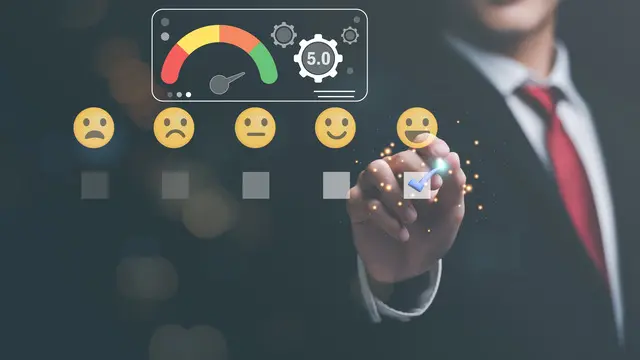Revolutionizing Sales Forecasting with Intelligent Automation
In today’s fiercely competitive retail landscape, accurate sales forecasting is paramount for businesses to thrive. However, manual forecasting processes are often time-consuming, error-prone, and fail to capture the complexities of modern markets. Sales Forecasting Automation offers a transformative solution, leveraging the power of Python, AI, and cloud-based technologies to streamline and enhance this critical business function.
Challenges of Sales Forecasting in Retail:
- Data Deluge: Retailers must navigate vast amounts of data from multiple sales channels, making it challenging to identify meaningful patterns.
- Market Volatility: Rapidly changing consumer trends and economic fluctuations can render historical data less reliable for forecasting.
- Human Bias: Manual forecasting introduces human subjectivity, leading to potential errors and inaccuracies.
Embracing Automation for Enhanced Forecasting:
Sales Forecasting Automation addresses these challenges by:
- Automating Data Collection: Python scripts can seamlessly extract data from sales platforms, ensuring accuracy and completeness.
- Leveraging AI for Pattern Identification: AI algorithms analyze historical data to identify hidden patterns and trends, providing valuable insights.
- Cloud-Based Scalability: Cloud solutions enable retailers to scale their forecasting capabilities as their business grows.
By embracing Sales Forecasting Automation, retailers can unlock significant benefits:
- Improved Accuracy: AI-powered analysis reduces human bias, leading to more precise forecasts.
- Increased Efficiency: Automation frees up valuable time for sales teams to focus on strategic initiatives.
- Data-Driven Decision-Making: Automated forecasting provides data-driven insights to support informed decision-making.
- Enhanced Revenue Prediction: Accurate sales forecasts empower retailers to optimize inventory levels, pricing strategies, and marketing campaigns, maximizing revenue potential.

Python, AI, and Cloud: The Power Trio for Sales Forecasting Automation
Python for Unattended and Attended Bots:
Python’s versatility shines in developing both unattended and attended bots for Sales Forecasting Automation:
- Unattended Bots: Python scripts can run autonomously, automating data collection and analysis tasks without human intervention.
- Attended Bots: Python-based attended bots provide real-time assistance to sales teams, offering insights and recommendations based on AI-powered analysis. The high level of customization available with Python allows for tailored solutions to meet specific business needs.
Cloud Platforms: The Ultimate Automation Orchestrators
Cloud platforms surpass traditional RPA/workflow tools in terms of features and capabilities:
- Scalability: Cloud platforms can seamlessly scale to handle large volumes of data and complex forecasting models.
- Integration: Cloud platforms offer seamless integration with various data sources and applications, enabling end-to-end automation.
- Advanced Analytics: Cloud-based AI services provide advanced analytics capabilities, empowering retailers with deeper insights and more accurate forecasts.
AI for Enhanced Accuracy and Edge Case Handling:
AI plays a pivotal role in improving the accuracy and robustness of Sales Forecasting Automation:
- Machine Learning: ML algorithms analyze historical data to identify patterns and trends, generating more precise forecasts.
- Image Recognition: AI can process images of receipts or invoices, extracting valuable data for forecasting.
- Natural Language Processing (NLP): NLP enables AI to understand and analyze unstructured text data, such as customer reviews or social media sentiment, providing additional insights for forecasting.
- Generative AI: Generative AI techniques can generate synthetic data to augment training datasets, improving the accuracy of AI models in handling edge cases.
By leveraging the combined power of Python, AI, and cloud platforms, retailers can unlock the full potential of Sales Forecasting Automation, gaining a competitive edge in the dynamic retail landscape.

Building the Sales Forecasting Automation with Python and Cloud
Sub-Processes of Sales Forecasting Automation:
1. Data Collection:
- Python: Develop Python scripts to extract data from sales platforms, ensuring accuracy and completeness.
- Cloud: Utilize cloud storage services to securely store and manage large volumes of data.
2. Data Analysis:
- Python: Leverage Python libraries for data cleaning, transformation, and analysis.
- Cloud: Employ cloud-based AI services for advanced analytics and pattern identification.
3. Forecasting:
- Python: Implement ML algorithms to generate sales forecasts based on historical data and market trends.
- Cloud: Utilize cloud computing power to handle complex forecasting models and large datasets.
4. Reporting and Visualization:
- Python: Create interactive dashboards and reports to present forecasting results.
- Cloud: Use cloud-based visualization tools for real-time insights and data exploration.
Importance of Data Security and Compliance:
In the retail industry, data security and compliance are paramount. Python and cloud platforms offer robust security measures to protect sensitive data, ensuring compliance with industry regulations.
Advantages of Python over No-Code RPA/Workflow Tools:
- Customization: Python provides unparalleled flexibility and customization options, allowing for tailored solutions to meet specific business needs.
- Scalability: Python scripts can seamlessly scale to handle large volumes of data and complex forecasting models.
- Integration: Python integrates effortlessly with various data sources and applications, enabling end-to-end automation.
Algorythum’s Unique Approach:
Algorythum recognizes the limitations of off-the-shelf automation platforms and takes a Python-based approach to Sales Forecasting Automation due to:
- Client Dissatisfaction: Pre-built RPA tools often fail to meet the unique requirements and performance expectations of businesses.
- Enhanced Control and Flexibility: Python provides greater control and flexibility over the automation process, allowing for customization and optimization.
- Proven Results: Algorythum’s Python-based solutions have consistently delivered superior results in terms of accuracy, efficiency, and scalability for our clients.

The Future of Sales Forecasting Automation
The convergence of Python, AI, and cloud platforms is rapidly transforming the landscape of Sales Forecasting Automation. As technology continues to advance, we can expect even more exciting possibilities:
- Integration with IoT Devices: IoT sensors can provide real-time data on factors influencing sales, such as weather conditions or customer foot traffic.
- Conversational AI: Chatbots powered by AI can assist sales teams with forecasting tasks, providing insights and recommendations.
- Quantum Computing: Quantum algorithms could significantly accelerate complex forecasting models, enabling more accurate and granular predictions.
Subscribe to Algorythum
Stay ahead of the curve by subscribing to Algorythum’s newsletter. Receive exclusive insights on the latest automation trends and industry-specific solutions.
Contact Us
Don’t wait to revolutionize your sales forecasting process. Contact the Algorythum team today for a free feasibility assessment and cost estimate tailored to your unique requirements. Let us help you unlock the full potential of Sales Forecasting Automation and drive your business towards success.

Algorythum – Your Partner in Automations and Beyond
At Algorythum, we specialize in crafting custom RPA solutions with Python, specifically tailored to your industry. We break free from the limitations of off-the-shelf tools, offering:
- A team of Automation & DevSecOps Experts: Deeply experienced in building scalable and efficient automation solutions for various businesses in all industries.
- Reduced Automation Maintenance Costs: Our code is clear, maintainable, and minimizes future upkeep expenses (up to 90% reduction compared to platforms).
- Future-Proof Solutions: You own the code, ensuring flexibility and adaptability as your processes and regulations evolve.









